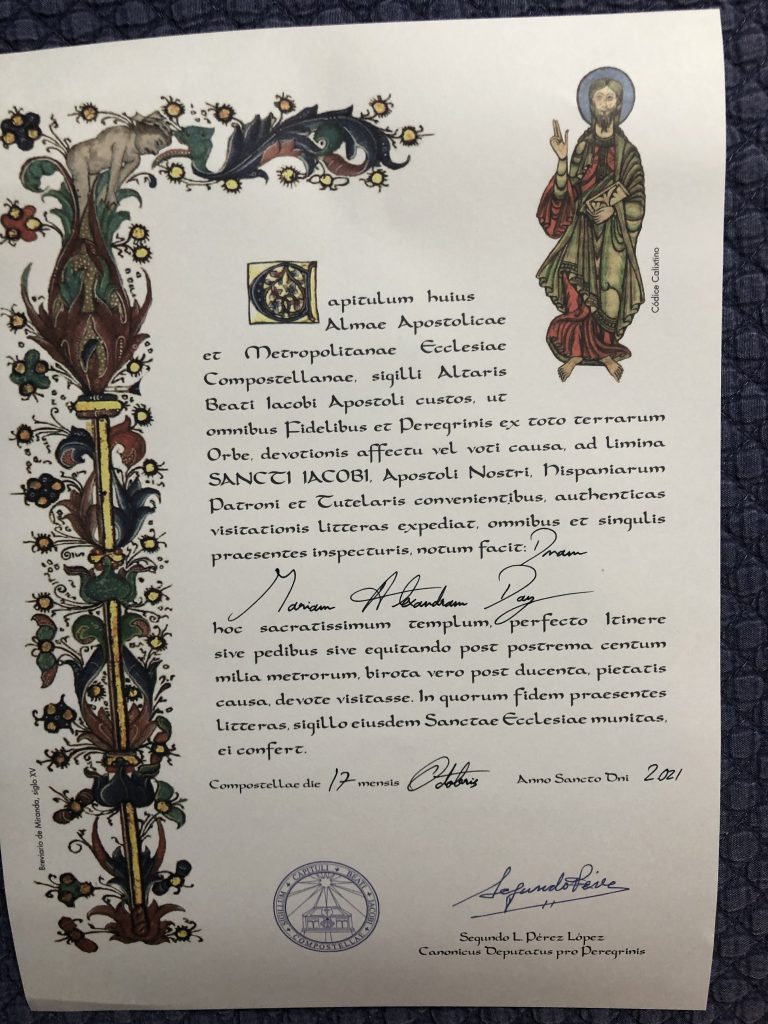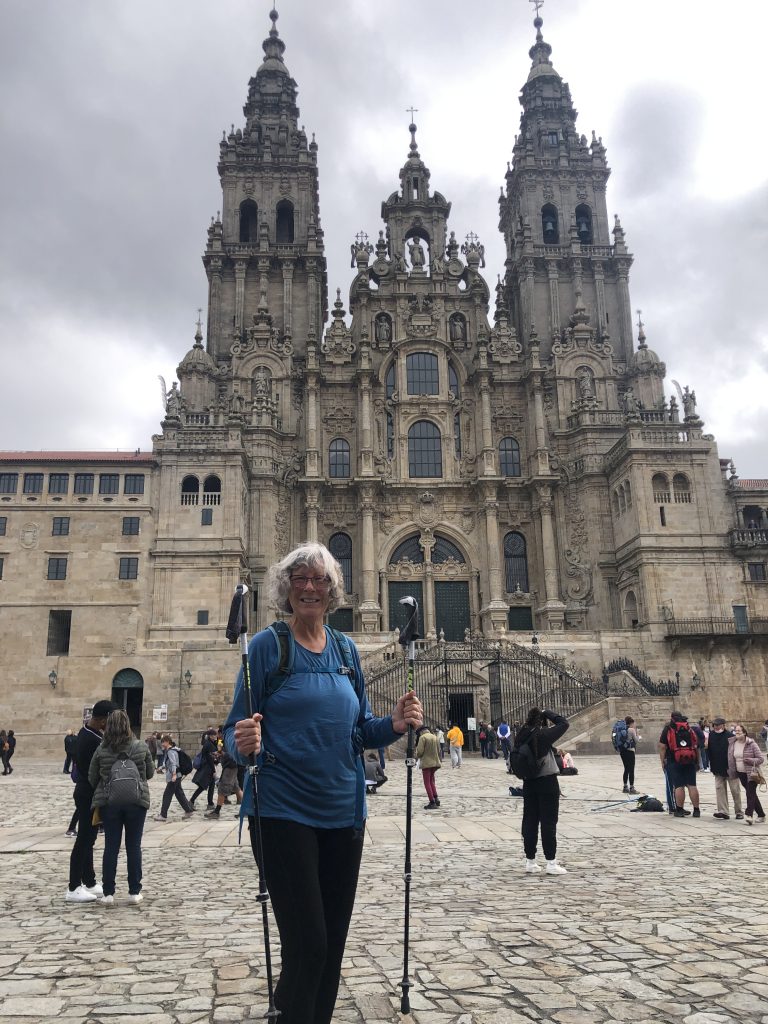Can you believe this place!? I walked a few steps past it because I didn’t recognize it as a laundromat!
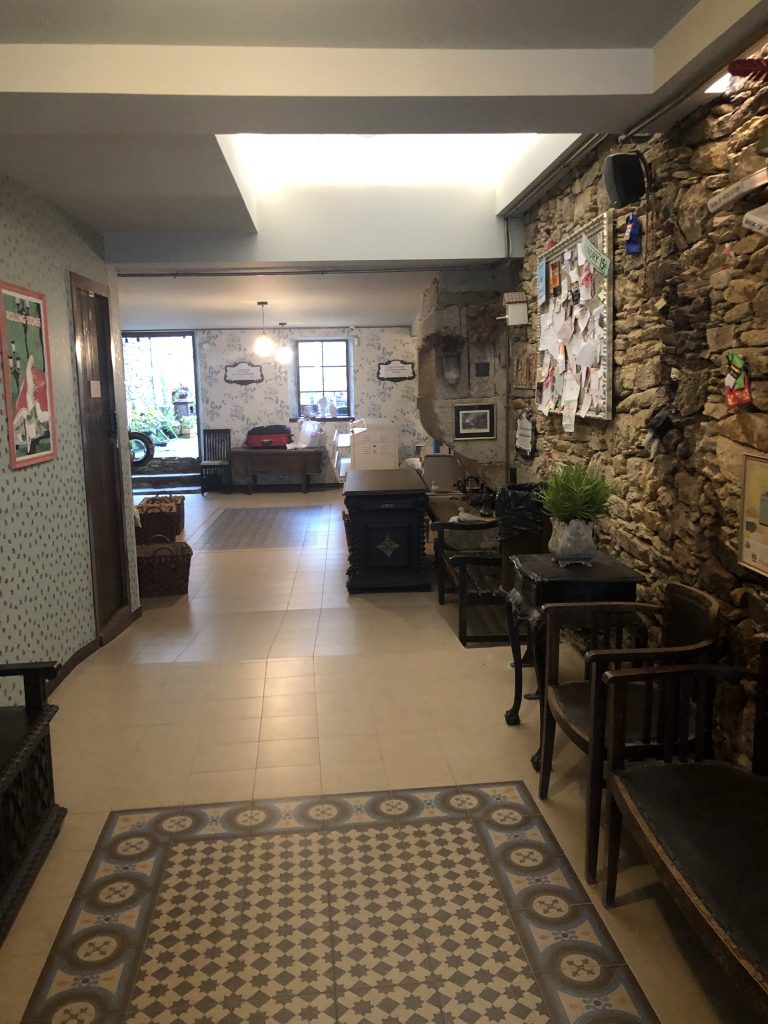

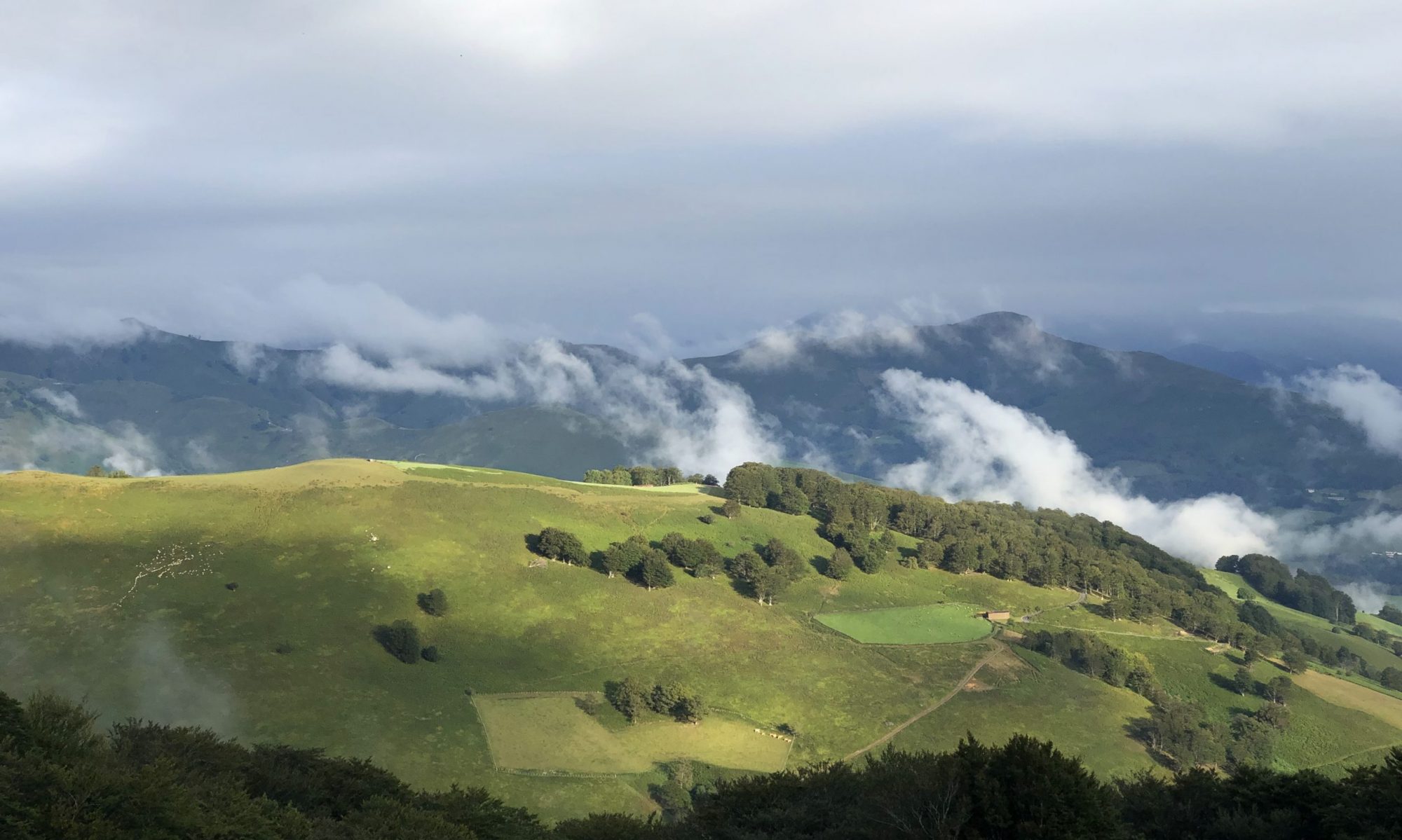
A Day On A Path
Can you believe this place!? I walked a few steps past it because I didn’t recognize it as a laundromat!


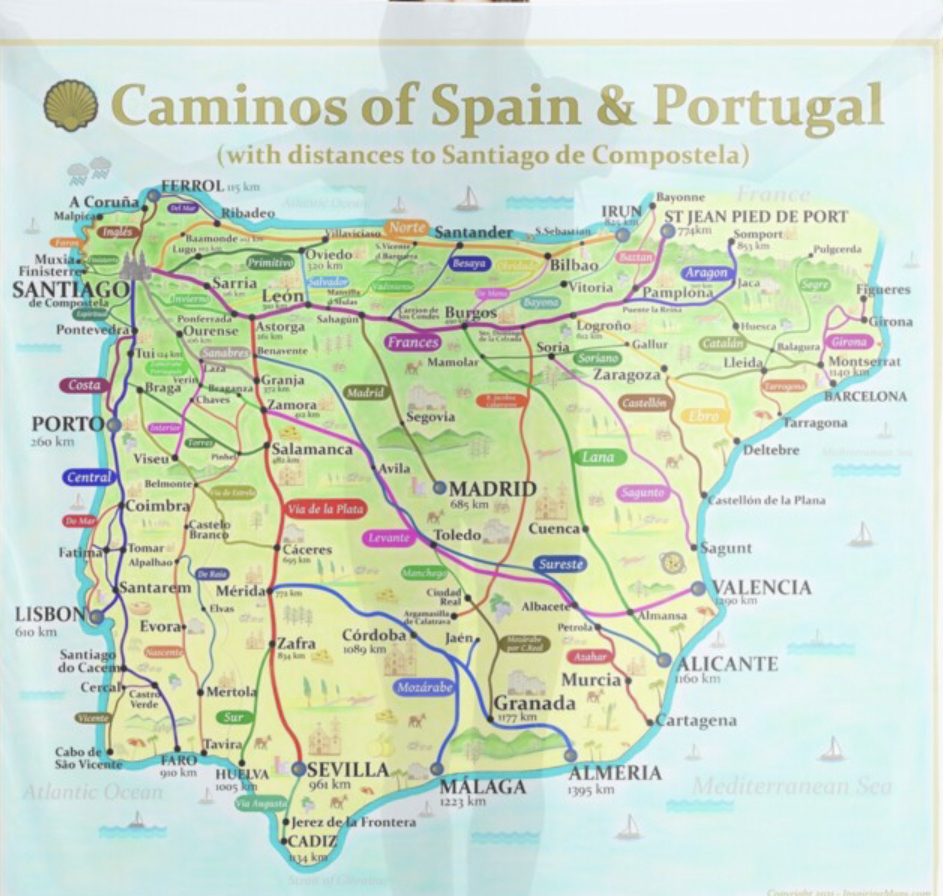
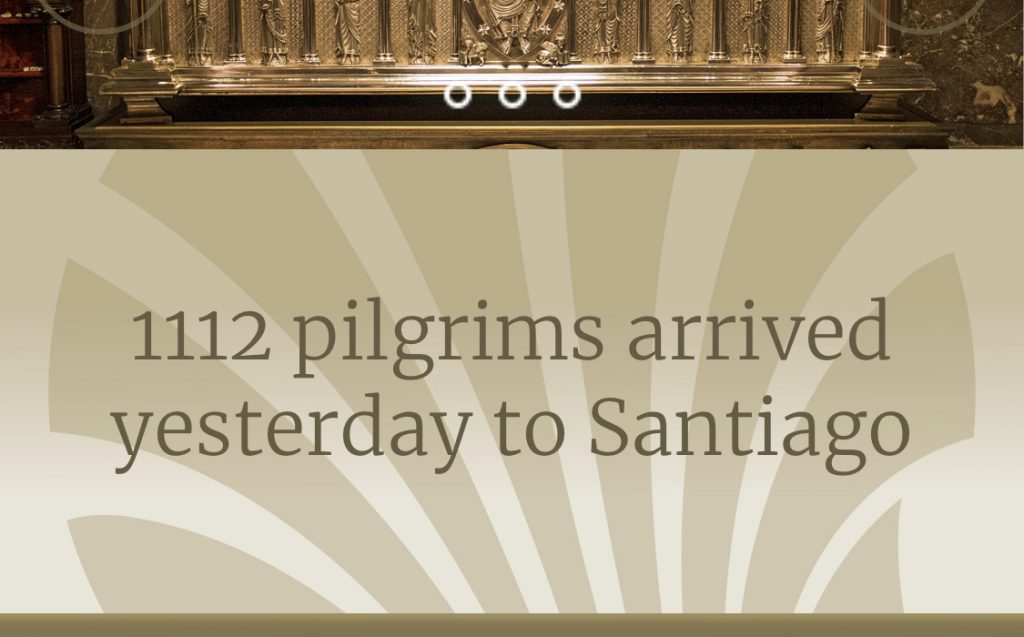
There is much to see and do here, but I’m only taking one day before walking on to the Camino Finisterre. This is a day of rest and of tending to small tasks: a trip to the Pilgrim’s Office for my Camino Finisterre credential, laundry, farmacia for magic Spanish ibuprofen.
I slept until 8:15, toddled down the street for cafe con leche and fresh-squeezed orange juice then stepped a little more lively further down the street for huevos fritas and pan. Now, I’m back in bed working up the energy to shower and start my day. Maybe I’ll be out and about by noon!

Lars ( Germany) This fellow was hanging out in front of the Santiago cathedral awaiting my arrival. We took a picture on his phone, but I don’t have it yet. This photo was taken in Leon.
He gifted me a pretty tube for my Compostela, took me to the location and explained the Compostela-getting process. Then he was off to hail a cab and head home. What a special surprise!
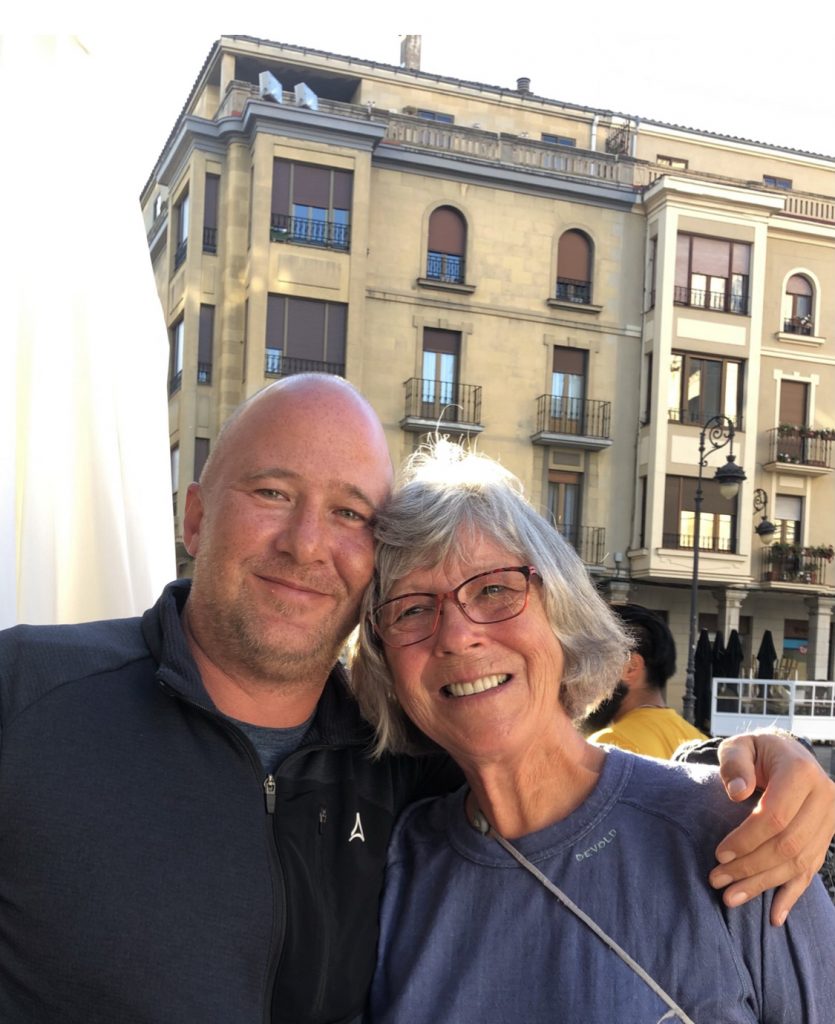
You may recall the video of Chris’ performance in the big hoop (if you are on my Facebook group- I haven’t been able to upload videos to this blog via my phone).
I met him and his Camino family sometime around mid-September. They are the ones who threw me the impromptu birthday party.
I happily ran into Chris (London) and Josephine (Denmark) last evening. Today, Chris returns to London and Josephine walks on to Finisterre.
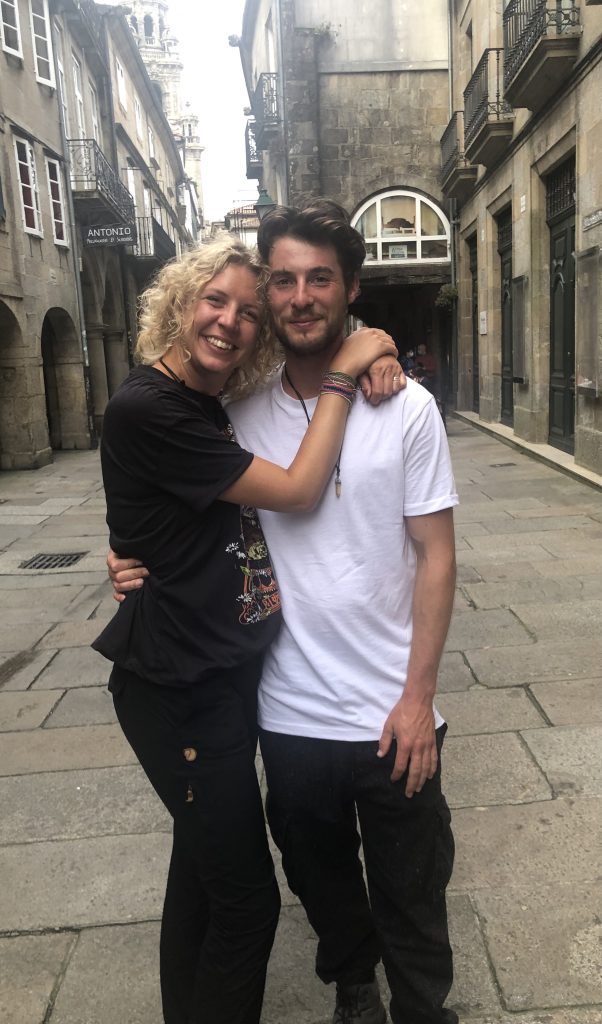
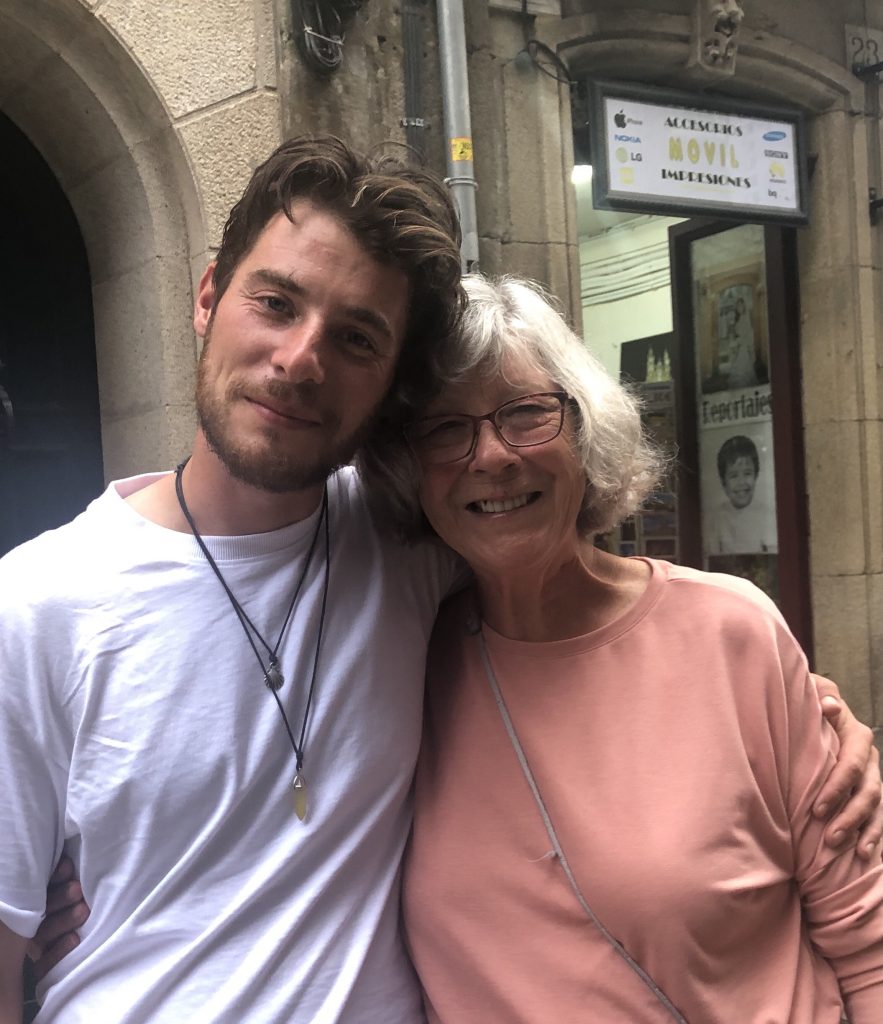
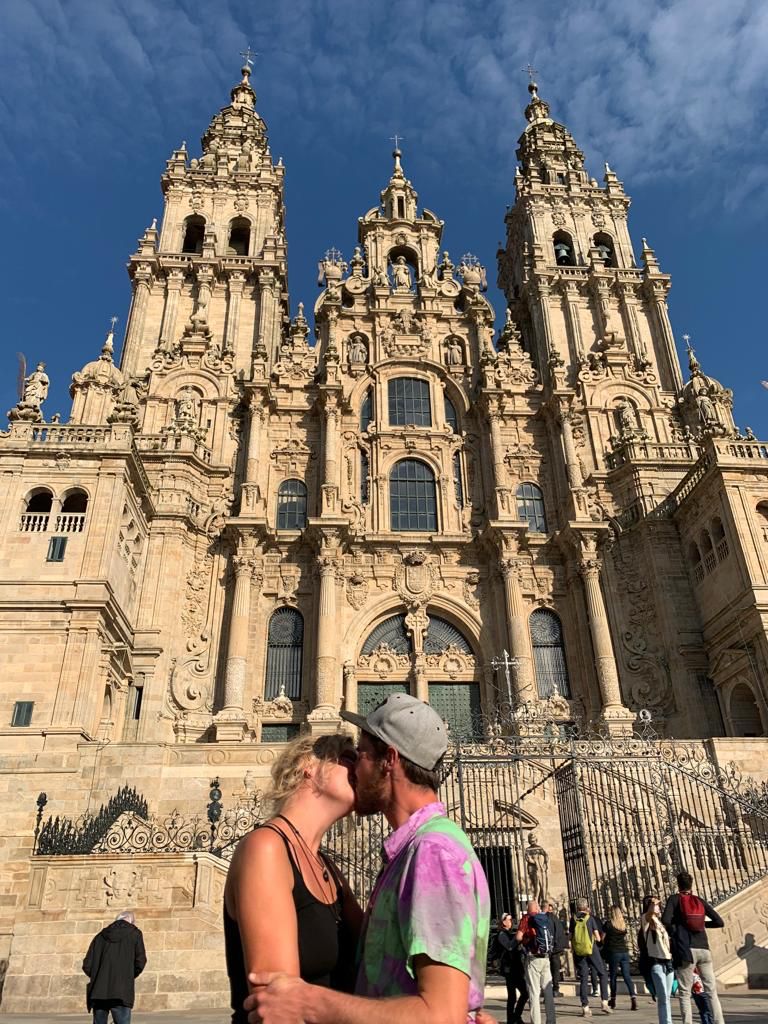
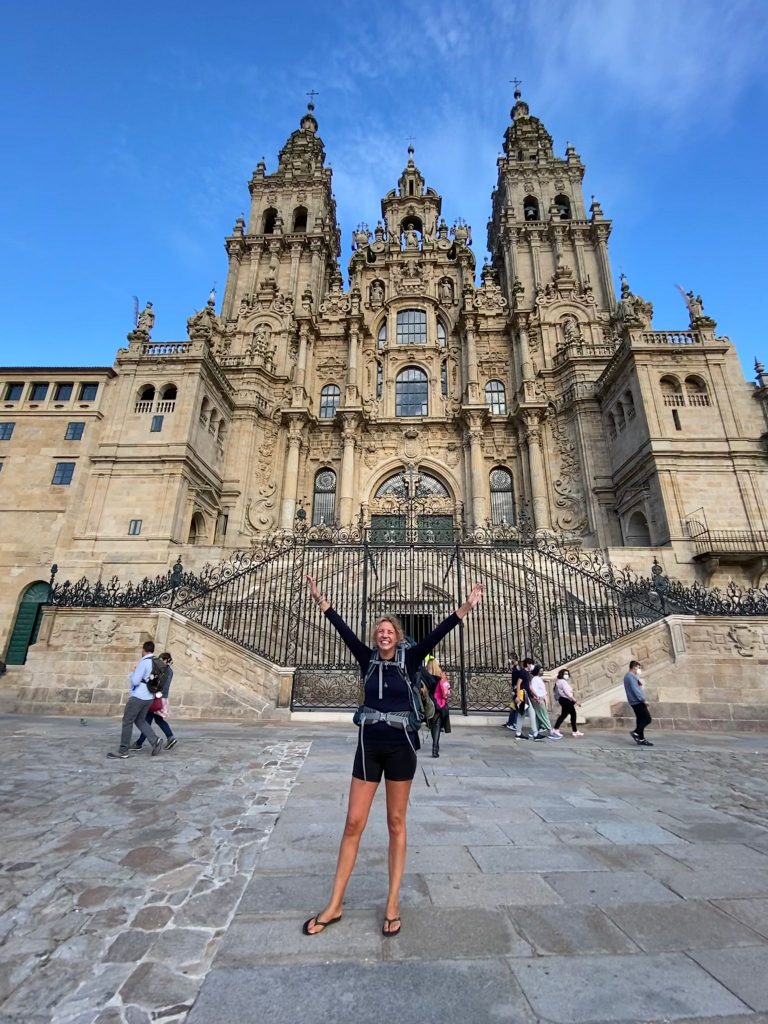
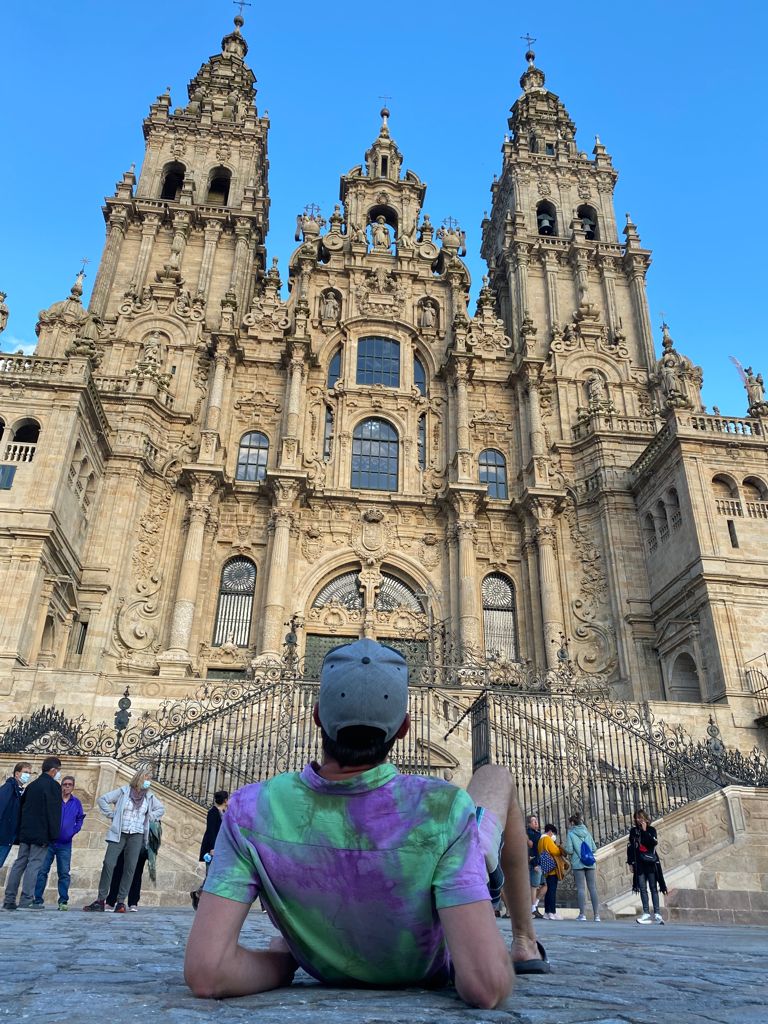
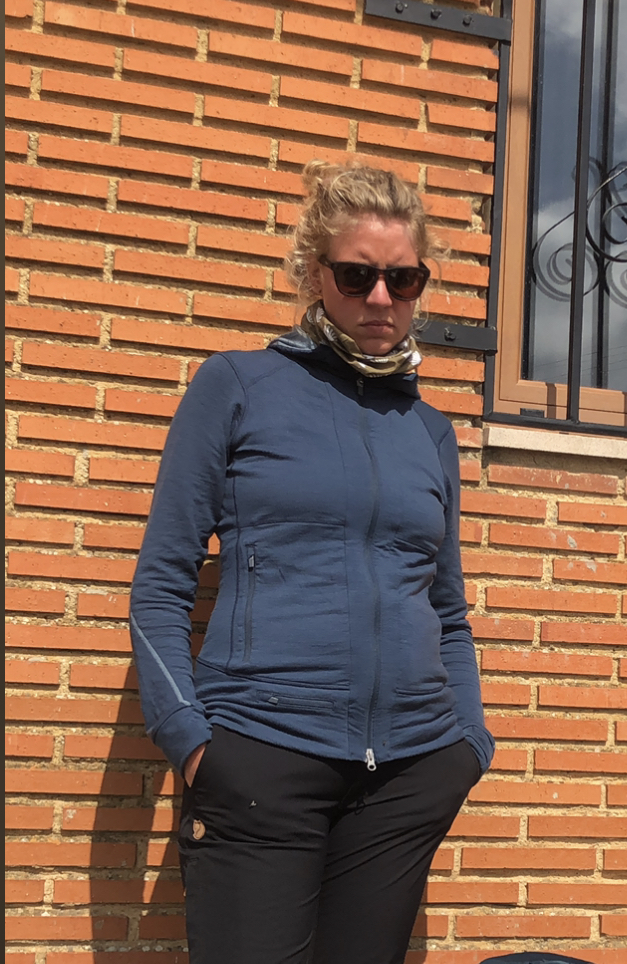
Alberto , 73 and son, Damiano with his girlfriend, Valentina.
Met this great family at the top of a hill somewhere while we caught our breath. Alberto is retired military and was well-prepared & trained for this walk. The “kids” didn’t have much time to train, so in the early days, they were getting pretty sore. Damiano is an IT healthcare software designer with a pharmacy solution and Valentina is a doctor. Many conversations, a breakfast and a dinner here and there along the way. Damiano thinks my next walk should be between Toscana and Rome. Hmmmmm
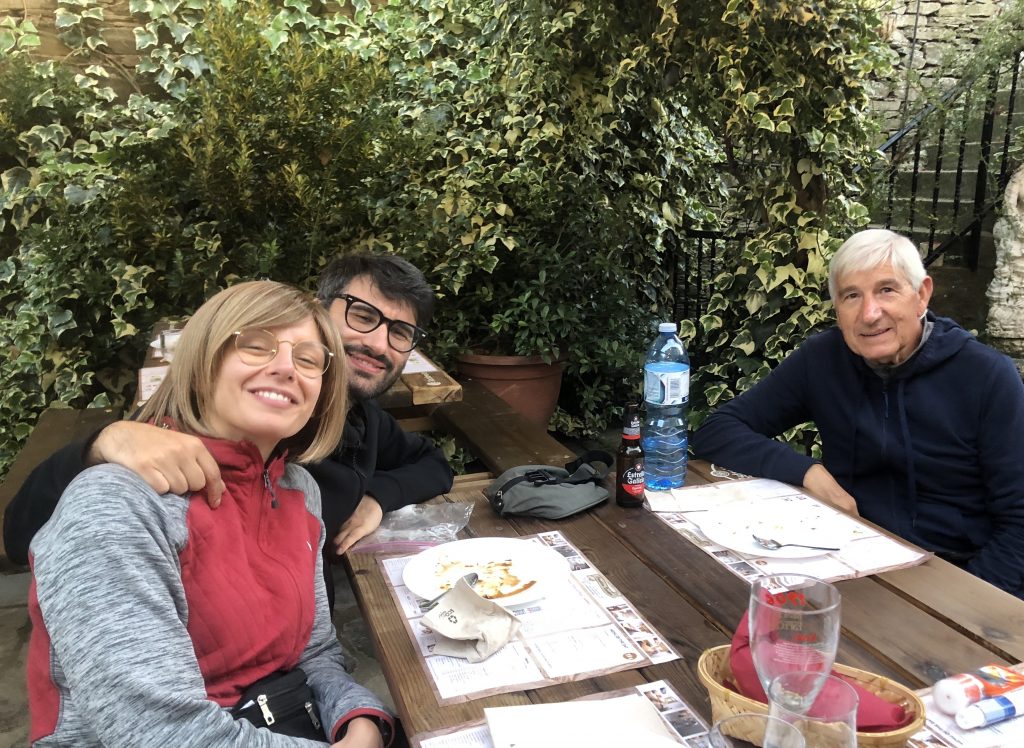
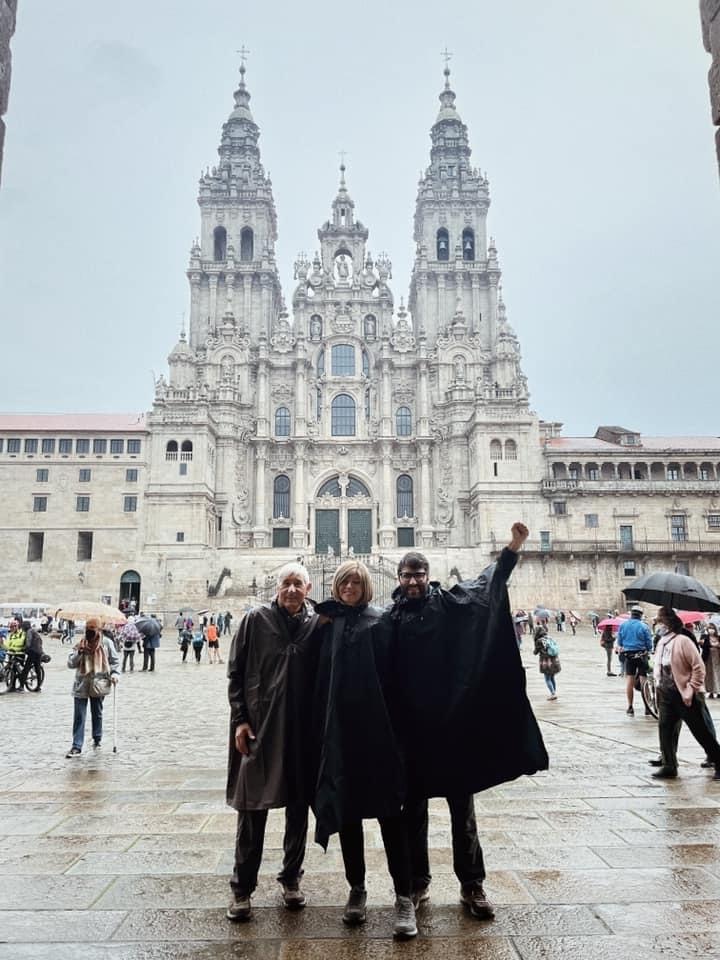
Nearly Every establishment on the camino has a stamp (sello). Pilgrims collect dated stamps to not only prove distance walked, but the credential is also required to stay in albergues meant for pilgrims.
Here’s my 2021 credential.
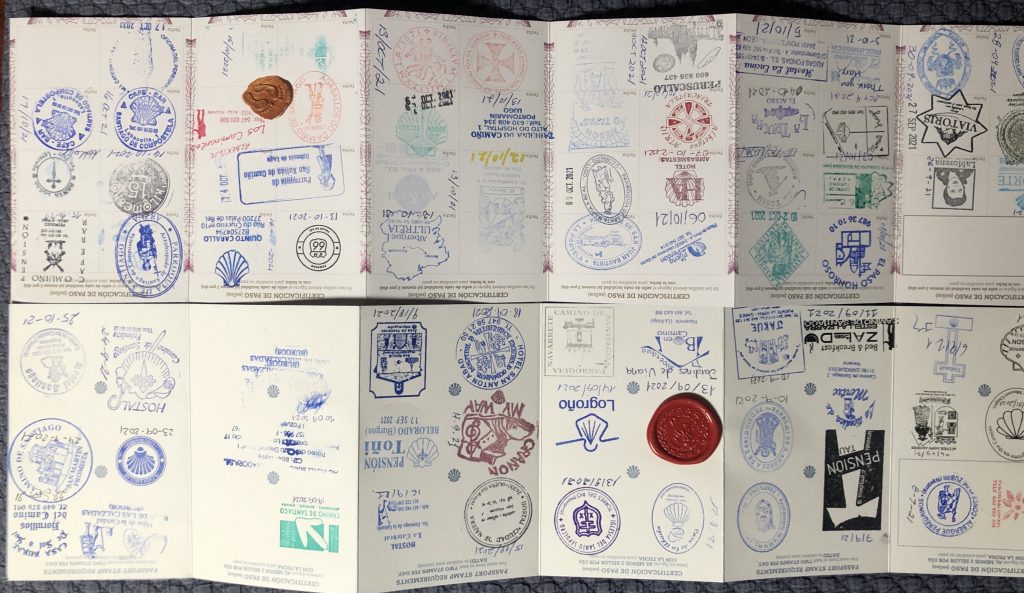
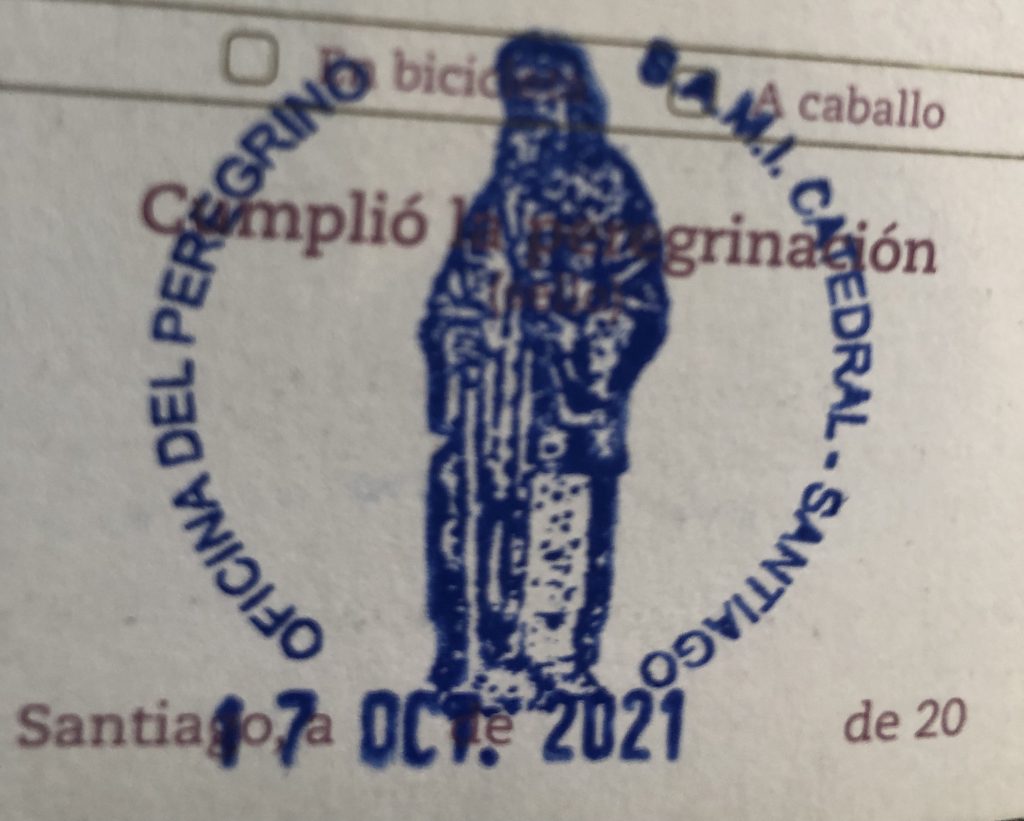
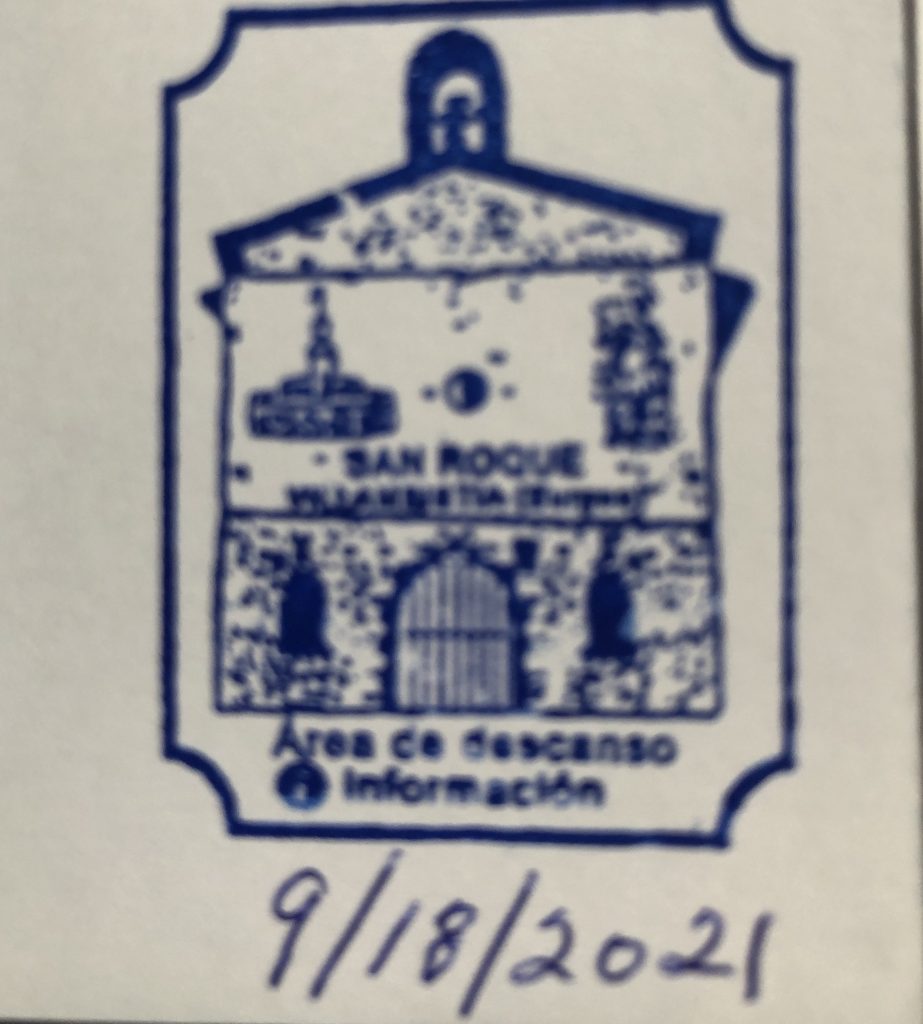
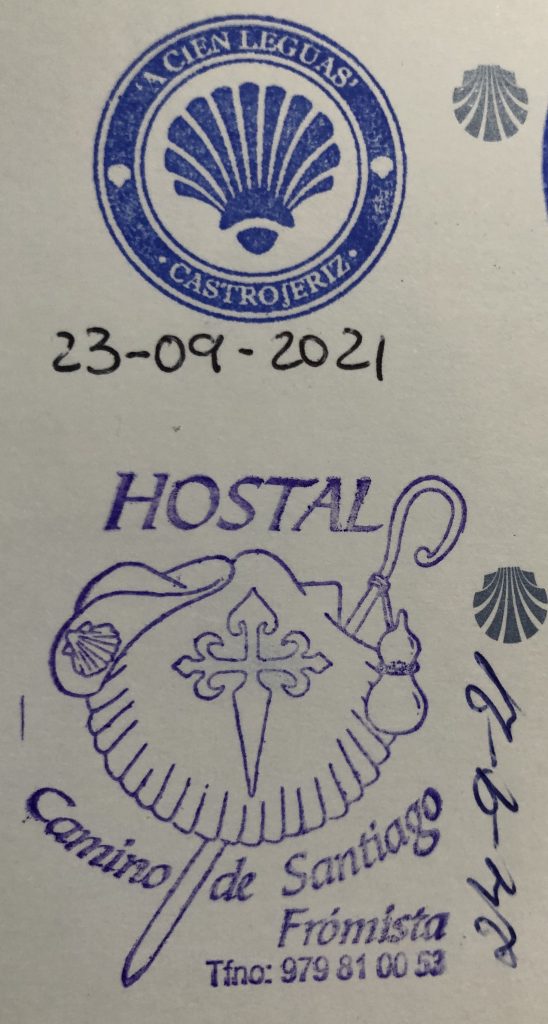
My certificate states I started in Saint-Jean-Pied-de-Port and finished in Santiago de Compostela. 779 kilometers
Accreditation of the number of km covered
In addition to the Compostela, the Pilgrim’s Reception Office offers pilgrims the Certificate of Distance, a document issued by the Chapter of the Cathedral of Santiago certifying the number of kilometres they have travelled, whatever the starting point of their pilgrimage. This new document reflects the desire that many pilgrims have expressed for several years to have an official record of more details of their pilgrimage. It indicates the day and the starting point of the pilgrimage, the kilometres covered, as well as the day of arrival and the route of the pilgrimage.

The Compostela is the document that certifies that a pilgrim has completed the Camino de Santiago. The Compostela is awarded by the Church authorities …. This accreditation was created in the 9th and 10th centuries when the pilgrimage to the tomb of Saint James the Apostle was given official status…. But these were easy to falsify, and in the 13th century the Church decided to replace them with the cartas probatorias or evidentiary letters, which are the direct predecessor of today’s Compostela.
